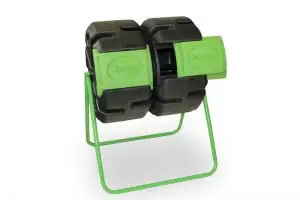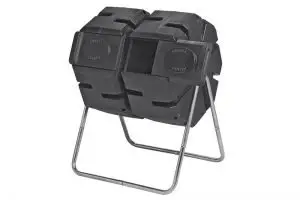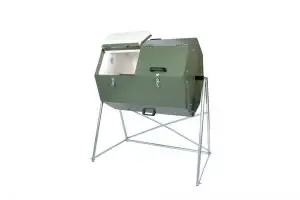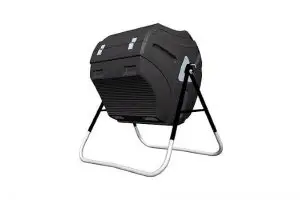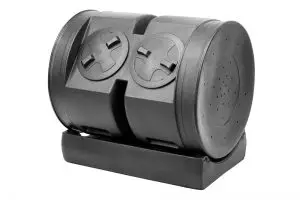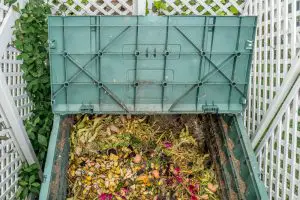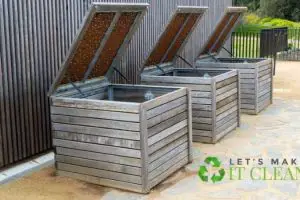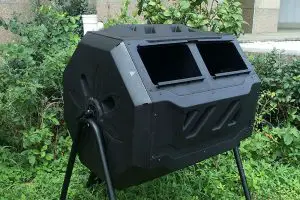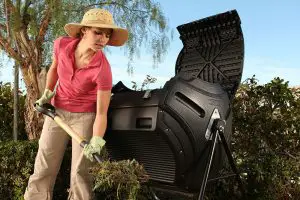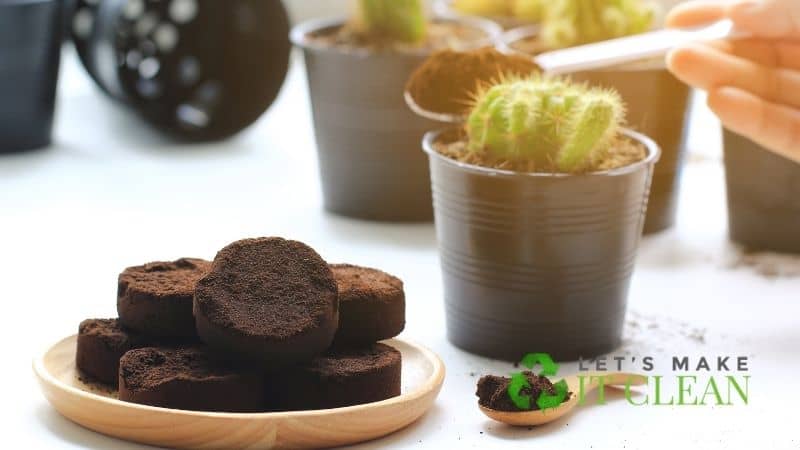If you want to find the best way to grow your cabbages, search no more. Here, we have answers to the best compost for growing vegetables. Learn how you can prepare your land to get the best results.

We also tell you how you can make your compost using readily available materials instead of buying so that you can save money.
Quick Navigation
Would you want to save some money you would otherwise use to buy garden fertilizer and soil conditioners? How about minding the environment by recycling your yard waste, kitchen waste, and other types of scraps that would end up in the landfill?
Gardeners use composting as the process of spending up the decomposition of biodegradable organic matter. The decomposed materials are excellent plant nutrients.
The compost helps to return essential nutriment from formerly living plants and animals back to your garden soils. The compost improves the soil structure of the garden soils, including clay soils.
But which is the best compost for home farmers to use in their vegetable gardens? Which compost offers the best nutrients for the healthy growth of plants?
Should I Buy Compost or Make My Own?
The aim of having compost is to add essential nutriment to your vegetable garden. As such, you can either buy or make your own compost.
However, it doesn’t hurt if you can save money as you also get the essential nutriment for your vegetables and other plants in the garden.
Is It Worth Making Your Own Compost?
The composting process is an effortless and seamless process that you can carry out alone in your backyard. You can have a compost pile at the corner of the garden where you can easily access the compost and use it in the garden.
If you don’t have enough space for a compost pile, you can opt for a compost bin or tumbler, which is ideal if you live in an urban setup.
You can compost any vegetable scraps and garden waste such as grass clippings as long as it is not treated with herbicides. Herbicides can be harmful to your plants when you apply the compost in the garden.
You can also have kitchen scraps in the compost piles, which can include coffee grounds, fruit peels, eggshells, and tea leaves, among others.
However, you should avoid meta, fat, and other dairy products as they may attract pests such as rodents in your compost pile.
You should make sure the compost pile is moist but not soggy. You can also activate it using manure, commercial fertilizer, bone meal, dried blood, or any other nitrogen fertilizer to speed up the decaying process.
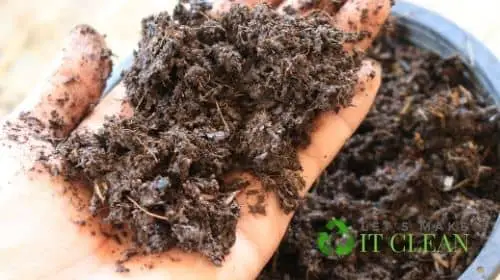
§Note, you need to keep the ingredients in the compost pile balanced. Too much of any ingredient will not offer the best compost.
There are two types of ingredients in a compost. The nitrogen-rich green ingredients include grass clippings, coffee grounds, and other types of yard waste. Most green ingredients are soft and don’t have a sturdy structure. As such, when you use them in excess in your compost, they become a mat that is not easy for air and water to penetrate.
If the compost is not well aerated, anaerobic microorganisms, that don’t require air take over.
This leads to an unpleasant smell, and the resulting compost is not ideal for growing veggies or other types of plants. We suggest using a compost aerator also knows as a compost turner.
But you should have more brown materials in the compost than green materials. Professional gardeners recommend 2/3 of brown materials to 1/3 of green materials.
Brown materials are rich in carbon, and they include organic matter such as dry leaves, shredded newspaper, hay, wood chips, pine needles, etc.
You should try and get rid of weed seeds and perennial plants from the compost material as they may cause composting challenges. The weed seeds may not decompose.
Apart from adding nutriment to your vegetable garden, compost also comes in handy in improving the soil structure. It can enhance the water holding capacity of sandy soils or improve the drainage of clay soils.
It also encourages worm activity in the soils. The earthworms feed on the compost as they also burrow and boreholes in the soils, enhancing soil aeration.
The worm activities also affect the soil structure as they loosen the soil particles, making it effortless for plant roots to spread. See our selection of the best worm composters available on the market today.
The Composting Process
For proper composting to happen, there needs to be a balance of moisture, heat, and air. As a gardener, make sure that you balance the three factors to speed up the decomposing process.
Aerating the compost involves turning the composting material from time to time. The ease of turning the material depends on your choice of composting method. For instance, if you go for a compost tumbler, it can come with a handle that makes it effortless for you to turn the compost material.
If you use a compost bin, you might have challenges turning the compost matter using a pitchfork. For a compost pile, you can use a pitchfork or digging fork to turn the materials.
Apart from allowing air circulation, turning the materials also helps to get the matter on the outside to the center where there is more heat. More heat speeds up the decomposing process while also killing the harmful pathogens in the compost.
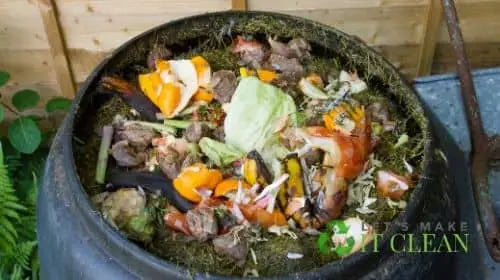
Decomposing takes place when microorganisms break down each organic material in the compost pile including fruit scraps, carrots, and whole fruits. The microorganisms don’t create nutrients. Instead, they breakdown the complex organic matter into lots of small ones that the plants can take.
For the microorganisms to work best, you need to maintain a conducive environment with the right temperature, moisture, and air.
Most microorganisms work best when the temperatures in the pile are about 60 degrees Fahrenheit. It will help if you have a compost thermometer to measure the pile temperatures.
If the temperatures are very high, they can kill the microorganisms. If they are too low, the microorganisms can become inactive, which will slow down or stop the composting process.
Two types of microorganisms are involved in the composting process. These include the aerobic microorganisms that require oxygen to compost. Alternatively, there are the anaerobic microorganisms that don’t require oxygen to compost.
It’s possible to compost in an airtight container during winter using the anaerobic microorganisms that don’t require air to function. If you are using a compost bin, pile, heap, or tumbler, you need aerobic microorganisms to carry out the composting process.
You need to turn the compost often (at least once every two weeks) to ensure proper aeration.
If you have excess green materials such as grass clippings and other types of yard waste, they can form a mat, making it a challenge for air and water to penetrate. This gives way for anaerobic microorganisms to take over, which may cause your compost to produce an unpleasant smell.
With proper management, the compost can be ready in two to four months.
Note, there are different composting methods as there are home gardeners. Thus, the composting period can vary depending on the composting method the gardener uses.
The result of a proper composting process is gold for your soils. It offers the necessary nutrients for gardening that make your veggies and other plants flourish. The finished compost is a coarse, dark brown, and peat-like material.
Apart from providing the necessary nutrients, you can also use compost as a mulch to maintain soil moisture.
Soil Prep for the Vegetable Garden
If you want to grow veggies, your garden needs to have the proper soil type that will provide the necessary nutrients for the veggies. There are various ways to prepare the soil throughout the growing season to ensure you get the best results.
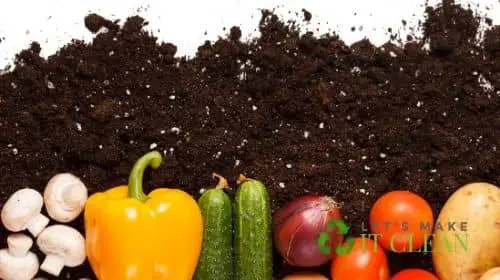
For starters, you need to test the soil to know its status and then use fertilizers and other organic materials to adjust the pH and drainage.
Testing the Soil
For veggies to grow healthy, they need full sunlight. You should expose them to sunlight for at least six to eight hours daily.
Identify a spot in your garden center that receives sunlight throughout the day and then drive stakes on the corners of the garden beds so that you don’t forget the spot.
Next, turn the soil in the garden centers such that the topsoil will be at the bottom and the bottom soil at the top. You can use a shovel in turning the soil. Ensure that you achieve a similar size of soil particles and consistency by breaking the large clods.
If there is grass in the garden, you should remove it before you start turning the soil. Instead of using a shovel to turn the soil, you can also use a cultivator or motorized tiller to help you loosen the soil fast. Ensure you contact the local authorities to find out if there are any water pipes or electrical wires in that area.
After loosening the soil, grab a handful in your hands and squeeze it tightly. If you squeeze it hard, it should form a loose ball which then crumbles apart. If the soil forms a ball, it is clay soil that may be too thick to grow veggies Sandy soil will not form a ball.
Repeat the process in different areas of your garden to test the type of soil as it may change in every planting area of the garden.
After that, you should test the soil for nutrients, pH, soil moisture, and drainage.
Amending the Soil
Before you can plant your veggies, you need to give the soil time to absorb nutrients. As such, it would help if you amend the garden at least a month before you can plant your veggies.
Turn the soil and ensure you have fine and consistent soil particles that will make it easy for the vegetable roots to spread.
If you have the time, it will be best to amend the garden soil before winter to make it ready for your veggies.
Use a rake to sift the garden to get rid of any weeds, rocks, and sticks that would be inside your garden. When you remove the weeds, also try to remove as many roots as possible, or else they will regrow. Excess weeds mean they’ll be competing for nutrients with your veggies.
Also, don’t put the weed roots in your compost bin or compost pile as they can regrow when you put the compost in your vegetable garden.
If your plot has clay soil, add gypsum to loosen it up. Mix the gypsum mineral using a spade or a shovel so that it combines well with the clay. If your plot has sandy soil, don’t add the gypsum soil as it will make it looser.
Next, mix the soil with organic materials such as compost or manure to add nutrients. Compost also comes in handy in improving the drainage of your soil. Apply a thin layer of finished compost and manure to your vegetable garden and then mix the manure using a shovel.
Ensure the compost or manure you use has no animal or meat products as they may be a problem for your veggies and also attract pests.
After you add your compost or manure, it will be best to test the pH again to determine if you need further amendments on your soil.
You can also use NPK fertilizer that has different levels of nitrogen, phosphorus, and potassium. Mix the fertilizer with the soil to absorb the nutrients before you can start planting your veggies.
Tiling the Land
Vegetables grow best when you plant them in rows. After amending the soil, you should tile the plot to make rows for planting your veggies.
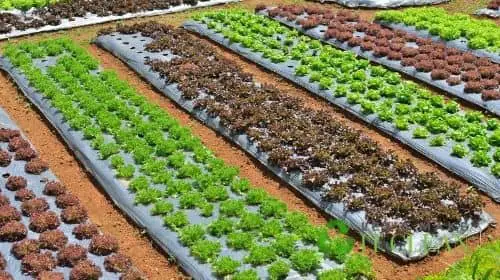
First, check the specifications of the variety you want to plant to see if they have special spacing requirements. After that, mark where you want to place the rows using stakes. It is not mandatory to make your rows straight though it helps to look neat.
The distance between the rows will depend on the variety of vegetables that you want to plant.
Next, use a hoe or a rake to push the soil into raised mounds of about 8 cm tall. It will help if you put each mound base at least 6 inches (15cm) wide to give room for the vegetable’s roots to grow without exposure.
Raised rows ensure your veggies grow healthy, but you don’t have to raise them.
After raising the rows, level the top of the row as veggies grow best if the top is level. The level top of the row ensures that the veggies grow straight down. It also gives room for the roots of the vegetables to expand.
Finally, plant your veggies and mulch between the rows. This helps prevent weeds from sprouting, and it also helps the soil retain water that helps the veggies flourish.
You can use a thin layer of compost as mulch and add another layer of inorganic mulch. The compost mulch will help retain water, prevent weeds, and leach essential nutrients to the soil. Do not mulch on top of the rows as it will make it difficult for the vegetables to develop.
Note, vegetable gardens require a lot of moisture. As such, you should ensure there is proper irrigation for your veggies to ensure they grow healthy.
If you don’t have a lot of time to spend watering the veggies, you can embrace drip irrigation which is popular in vegetable gardening.
Drip irrigation maintains moisture at the base of the mounds with fewer chances of evaporation. The water is also not in contact with the leaves, which reduces the chances of foliage disease infections.
Can You Grow Vegetables in Compost?
Nothing stops you from planting your veggies in composts. However, it is not good to plant the veggies in compost as it will cause water retention issues. Compost is also lighter than other types of soils, and it cannot support a strong root system.
If you want the most satisfying results, you should mix the composts with topsoil in your garden.
If you want the compost to use in planting veggies, ensure it is rich in nitrogen. Vegetables love nitrogen as it helps them to grow faster and healthier.
Conclusion
Using compost in growing your vegetables is an excellent idea. The compost helps to retain moisture which is essential in plant growth. It also offers the necessary nutrients, such as nitrogen which facilitate faster and healthier veggies.
If you use compost as mulch, it also controls the growth of weeds. Before you can plant the vegetables, ensure you prepare the garden earlier. Ensure you do amendments to ensure the soil has the best nutrients to ensure the veggies give the best yields.

